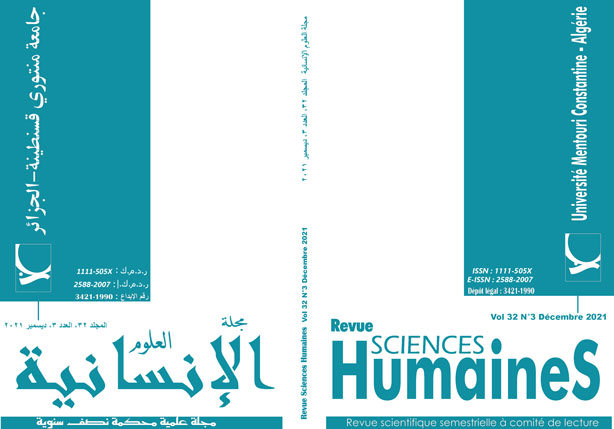E-Learning at the university during the covid-19 pandemic, between perspectives and reality on the ground
Keywords:
health crisis, digital tools, own learning, teaching pratices, E-LearningAbstract
With the health crisis of Covid-19, E-Learning has become the focus of interest of various educational institutions, particularly the university. In Algeria, like many countries in the world, the Ministry of Higher Education and Scientific Research opted for a hybrid education, during the academic year 2020-2021 to fight against the spread of the virus. In this context, the teaching takes place in two alternatives, a period of face-to-face teaching, followed by a period of distance learning. To ensure pedagogical support for the learners during the distance learning phase, it was recommended that teachers provide online sessions via the MOODLE platform or other devices. Through this contribution, we plan to highlight the different teaching/learning strategies generated by this mode of teaching. We also wonder about its effectiveness and we hope to propose resolutions that would contribute to its improvement.
Downloads
References
. Barbot, Marie-José, Barbot, M.-J. (2003). "Médiatisation dans l'enseignement : vers un nouveau paradigme éducatif ?", Apprentissage des langues et systèmes d'information et de communication, Volume : 06, numéro : 1, année, pp. 175-189.
. Charlier, Beradette, Deschryver, Nathalie. & Peraya, Daniel. (2006). "Apprendre en présence et à distance – Une définition des dispositifs hybrides". Distances et savoirs, vol. 4, n° 4. pp. 469 496
. Charlier, Beradette, Deschryver, Nathalie. & Peraya, Daniel. (2014). "Une première approche de l’hybridation". Éducation et Formation, n° e-301. pp. 15 34.
. Coswatte, Sandra, (2014). Updated E-Learning Definition. Conlsulté le 01-04-2021: https://onlinelearningconsortium.org/updated-e-learning-definitions/
. Holec, Henri. « orientations pédagogiques fondamentales ». in Holec, H. & Huttun, Irma. (dir.). L’autonomie de l’apprenant en langues vivantes. Recherche et développement. Strasburg : Conseil de l’Europe. pp. 13-22.
. Peraya, Daniel. (2005). « La formation à distance : un dispositif de formation et de communication médiatisée. Une approche des processus de médiatisation et de médiation, TICE et de développement ». Technologies Développement Recherche. Visité le 16-02-2021 : https://archive-ouverte.unige.ch/unige:17647
. Puren, Christian. (2020). Ess ai de problématisation et de modélisation de l’ « enseignement à distance » en didactique scolaire des langues-cultures : pour une ingénierie de l’hybridation. Consulté le 30-08-2021. file:///C:/Users/mscom/AppData/Local/Temp/PUREN_2020e_Didactique%20hybridation.pdf
. Ryan, M. Richard & Deci, Edward L. (2000). “Intrinsic and extrinsic motivations: classic definitions and new directions”. Contemporary education psychology. Volume: 25, numéro 1. pp. 54-67.
. Sener, John (2015). Updated E-Learning definition. Conlsulté le 01-04-2021: https://onlinelearningconsortium.org/updated-e-learning-definitions-2/
Downloads
Published
How to Cite
Issue
Section
License

This work is licensed under a Creative Commons Attribution-NonCommercial-ShareAlike 4.0 International License.
















